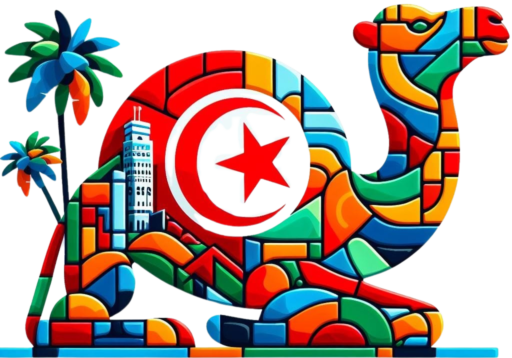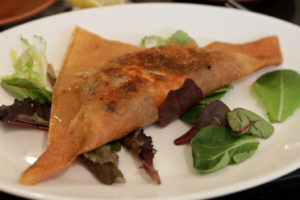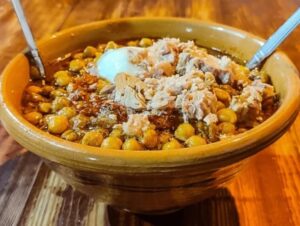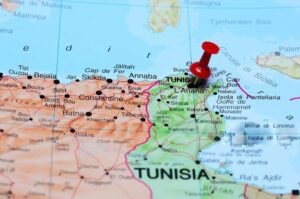What to Eat in Tunisia: An Explosion of Authentic Flavors
Tunisia is a true paradise for gastronomy lovers, a melting pot of cultures and traditions reflected in its rich and diverse cuisine. Discovering what to eat in Tunisia means embarking on a sensory journey through intoxicating aromas, exotic spices, and intense flavors. This guide is designed to help you explore typical Tunisian dishes, offering useful tips, price information, and suggestions for an unforgettable culinary experience. Get ready to delight your taste buds with delicacies that tell the story and soul of this fascinating country.
Tunisian cuisine is a fascinating mix of Berber, Arab, French, and Mediterranean influences, resulting in a variety of unique and tasty dishes. From local markets to Michelin-starred restaurants, you’ll have the opportunity to savor authentic specialties and discover the secrets of Tunisian gastronomy. In this guide, we will reveal what to eat in Tunisia to experience a complete and satisfying culinary journey.
Couscous: The King of the Tunisian Table
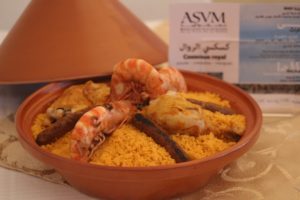
Couscous is undoubtedly Tunisia’s most emblematic dish, a symbol of conviviality and tradition. Made with durum wheat semolina, vegetables, meat (lamb, chicken, or beef), and spices, Tunisian couscous stands out for its rich and aromatic flavor. Each region has its own variation, with unique ingredients and preparations.
There are different types of Tunisian couscous, including fish couscous, typical of coastal areas, vegetable couscous for vegetarians, and sweet couscous enriched with raisins, almonds, and honey. Preparing couscous is a real ritual that requires time and patience. The semolina is hand-worked and steamed in a special pot called a “couscoussier.”
This dish is usually served in a large communal plate, where each diner can serve themselves. It is a convivial dish, perfect for special occasions and family gatherings. Tasting an authentic Tunisian couscous is an unforgettable experience, a true journey into the heart of Tunisian culture. When thinking about what to eat in Tunisia, couscous is the obvious answer.
Tunisian Tajine: An Explosion of Flavors

The tajine is another typical Tunisian dish, a stew of meat, vegetables, and spices cooked in a characteristic terracotta pot with a conical lid. Unlike the Moroccan tajine, the Tunisian version is more like an omelet or a savory pie, enriched with eggs, cheese, and parsley. Each family has its own recipe, passed down from generation to generation.
There are several variations, including chicken tajine, lamb tajine, vegetable tajine, and fish tajine. The ingredients are layered in the terracotta pot and slowly cooked in the oven or over the fire until reaching a creamy consistency and intense flavor. It is a versatile dish, perfect for a light lunch or a hearty dinner.
The Tunisian tajine is an explosion of flavors and aromas, a mix of sweet and savory that delights the palate. It is a dish that tells the story and culture of Tunisia, a culinary experience not to be missed.
If you are wondering what to eat in Tunisia, the tajine is definitely one of the tastiest answers.
Brick: Crispy Tunisian Delight
Brick is another typical Tunisian food, a thin and crispy pastry filled with egg, tuna, capers, and harissa (spicy sauce). The brick is deep-fried until golden, becoming crispy on the outside and soft on the inside. It is a simple yet delicious dish, perfect as an appetizer or snack.
There are different varieties of brick, including egg brick, tuna brick, cheese brick, and vegetable brick. The filling can be enriched with olives, potatoes, parsley, and other spices. Preparing brick is quick and easy but requires some skill to prevent the pastry from breaking during frying.
Brick is a typical dish found everywhere in Tunisia, from restaurants to street stalls. It is an authentic culinary experience, a taste of the real Tunisia. You cannot say you have visited Tunisia without tasting a hot, crispy brick.
If you’re unsure about what to eat in Tunisia, brick is a safe and delicious choice.
Harissa: The Spicy Touch of Tunisia
Harissa is a spicy sauce made from red chili peppers, garlic, cumin, coriander, and olive oil, used to enhance the flavor of many Tunisian dishes. Harissa is a key ingredient in Tunisian cuisine, a true national symbol. Its intense and spicy taste adds vibrancy and warmth to every dish.
Harissa is used to season couscous, tajine, brick, soups, sauces, and many other dishes. It is also served as a side dish, accompanied by fresh bread and olives. There are different variations of harissa, depending on the type of chili peppers used and the added spices. Some versions are spicier, while others are more aromatic.
Harissa is an ingredient that divides opinions: some love it, while others dislike it. But if you are a spice lover, you cannot miss trying Tunisian harissa. It adds a touch of magic to every dish, making it unique and unforgettable. If you’re wondering what to eat in Tunisia for an authentic experience, don’t forget to try dishes seasoned with harissa.
Traditional Tunisian Sweets: An Unforgettable Finale
After savoring the savory dishes, it’s time to indulge in a traditional Tunisian dessert. Tunisian pastries are rich and diverse, influenced by Arab, French, and Mediterranean traditions. Among the most famous sweets are baklava, makroud, yoyo, and assida zgougou.
Baklava is a pastry made with phyllo dough, chopped nuts, and sugar syrup, typical of many Middle Eastern and North African countries. Makroud are semolina and date-based pastries, fried and soaked in honey. Yoyo are fried doughnuts covered with powdered sugar. Assida zgougou is a sweet cream made from pine nuts, traditionally prepared for the Mawlid celebration.
Tunisian sweets are the perfect way to end an unforgettable meal. Their sweet and aromatic flavor, combined with a soft and crunchy texture, delights the palate and leaves a pleasant memory. You cannot say you’ve visited Tunisia without tasting its delicious desserts. When thinking about what to eat in Tunisia, make sure to leave room for dessert.
Merguez

For all meat lovers, a traditional Tunisian dish is merguez, small sausages made from lamb or beef, seasoned with many spices.
Merguez, sometimes spicy, are ideal and often used in a variation of couscous. The sausages are usually grilled and also enjoyed inside sandwiches with French fries.
Mechouia Salad

The mechouia salad, a must-try dish during a stay in Tunisia, is a salad made with various ingredients.
There are many variations, but the most well-known version is prepared with grilled peppers, peeled tomatoes, and onions, then seasoned with olive oil, lemon, garlic, cumin, ground coriander, and sometimes harissa.
Eating in Tunisia: Price Guide
One of the most interesting aspects of Tunisia is its relatively low cost of living, which is also reflected in restaurant prices and traditional dishes. Eating in Tunisia prices is generally affordable, especially if you opt for local restaurants and street food stalls.
A full meal in a local restaurant can cost between 5 and 15 euros per person, depending on the type of restaurant and dishes ordered. Street food stalls offer even cheaper options, such as sandwiches, brick, and snacks starting from 1 euro. Tourist restaurants, especially in more frequented areas, tend to have higher prices.
To save money, it is advisable to avoid tourist restaurants and opt for places frequented by Tunisians. Additionally, it’s always a good idea to ask for the price before ordering, especially at street food stalls. With a limited budget, you can enjoy excellent traditional dishes and have an authentic culinary experience. Researching eating in Tunisia prices will help you better plan your trip.
In conclusion, Tunisia offers a rich and diverse culinary experience, suitable for all tastes and budgets. Discovering what to eat in Tunisia means embarking on a journey through authentic flavors and ancient traditions.
Here is a short video on the topic.
